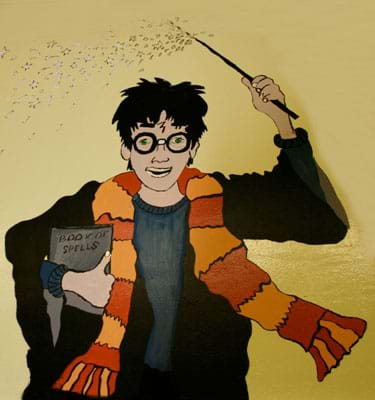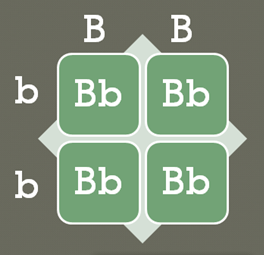
Summary
Under the "The Science Behind Harry Potter" theme, a succession of diverse complex scientific topics are presented to students through direct immersive interaction. Student interest is piqued by the incorporation of popular culture into the classroom via a series of interactive, hands-on Harry Potter/movie-themed lessons and activities. They learn about the basics of acid/base chemistry (invisible ink), genetics and trait prediction (parseltongue trait in families), and force and projectile motion (motion of the thrown remembrall). In each lesson and activity, students are also made aware of the engineering connections to these fields of scientific study.Engineering Connection
Evidence of human engineering is present in nearly every type of applied science field. Mechanical engineers use their knowledge of force and motion to build engines that transport goods and people, machines and tools, ranging from vacuum cleaners to assembly equipment in factories, which make our ways of life possible, along with many other types of devices. Structural engineers use their knowledge of force and motion to design structures that can withstand normal forces such as wind and atypical forces such as earthquakes, monsoons and hurricanes. Other engineers apply their understanding of genetics to the design of insect repellant crops, genetically modified food, cloning and stem cell research. Engineers use their knowledge of acid and base chemistry to design non-corrosive infrastructures, car batteries, chemical fertilizers and food preservation techniques. Engineering is truly all around us.
Unit Overview
Basically Acids and Basically Acidic Ink
In this lesson/activity set, students learn the basics of acid/base chemistry in a fun, interactive way, inspired by instances of acid/base chemistry seen in popular films such as Harry Potter and the Prisoner of Azkaban and National Treasure. In National Treasure, characters apply lemon juice and heat to the back of the original Declaration of Independence to reveal an old message written in invisible ink. In the Harry Potter movie, a blank piece of parchment becomes a magical Marauder's Map. As students create their own invisible inks, they learn what acids, bases and indicators are and how they can be used. They also learn how engineers use acids and bases everyday better our quality of life.

Don't Be a Square
Students watch a video clip from Harry Potter and the Goblet of Fire to learn about genetic traits. Specifically, they realize that the ability to speak parseltongue (being able to speak to snakes) is a genetic trait possessed by some characters and their parents. Students explore the use of Punnett squares to predict trait inheritance, learning about genotypes and phenotypes.

Projectile Magic and Magical Motion
In this lesson/activity set, students watch video clips from October Sky and Harry Potter and the Sorcerer's Stone to learn about projectile motion. In October Sky, Homer Hickam calculates the trajectory of a homemade rocket in front of his science class. In the Harry Potter movie, Malfoy throws Neville's remembrall and Harry races after it, making a spectacular catch (all while flying on broomsticks). Then students explore the relationships between displacement, velocity and acceleration and calculate simple projectile motion.

Educational Standards
Each TeachEngineering lesson or activity is correlated to one or more K-12 science,
technology, engineering or math (STEM) educational standards.
All 100,000+ K-12 STEM standards covered in TeachEngineering are collected, maintained and packaged by the Achievement Standards Network (ASN),
a project of D2L (www.achievementstandards.org).
In the ASN, standards are hierarchically structured: first by source; e.g., by state; within source by type; e.g., science or mathematics;
within type by subtype, then by grade, etc.
Each TeachEngineering lesson or activity is correlated to one or more K-12 science, technology, engineering or math (STEM) educational standards.
All 100,000+ K-12 STEM standards covered in TeachEngineering are collected, maintained and packaged by the Achievement Standards Network (ASN), a project of D2L (www.achievementstandards.org).
In the ASN, standards are hierarchically structured: first by source; e.g., by state; within source by type; e.g., science or mathematics; within type by subtype, then by grade, etc.
See individual lessons and activities for standards alignment.
Subscribe
Get the inside scoop on all things TeachEngineering such as new site features, curriculum updates, video releases, and more by signing up for our newsletter!Unit Schedule
- Day 1: Basically Acids lesson
- Day 2: Basically Acidic Ink activity
- Day 3: Don't Be a Square lesson
- Day 4: Projectile Magic lesson
- Day 5: Magical Motion activity
More Curriculum Like This

Students learn the basics of acid/base chemistry in a fun, interactive way by studying instances of acid/base chemistry found in popular films such as Harry Potter and the Prisoner of Azkaban and National Treasure. Students learn what acids, bases and indicators are and how they can be used, includi...

After watching video clips from the Harry Potter and the Goblet of Fire movie, students explore the use of Punnett squares to predict genetic trait inheritance. The objective of this lesson is to articulate concepts related to genetics through direct immersive interaction based on the theme, The Sci...

Students hypothesize whether vinegar and ammonia-based glass cleaner are acids or bases. They create designs on index cards using these substances as invisible inks.

Students explore the relationships between displacement, velocity and acceleration and calculate simple projectile motion. The objective of this activity is to articulate concepts related to force and motion through direct immersive interaction based on the theme, The Science Behind Harry Potter.
Copyright
© 2013 by Regents of the University of Colorado; original © 2011 University of HoustonContributors
Rachel Howser; Christine HawthorneSupporting Program
National Science Foundation GK-12 and Research Experience for Teachers (RET) Programs, University of HoustonAcknowledgements
This digital library content was developed by the University of Houston's College of Engineering under National Science Foundation GK-12 grant number DGE-0840889. However, these contents do not necessarily represent the policies of the NSF and you should not assume endorsement by the federal government.
Last modified: March 7, 2018







User Comments & Tips